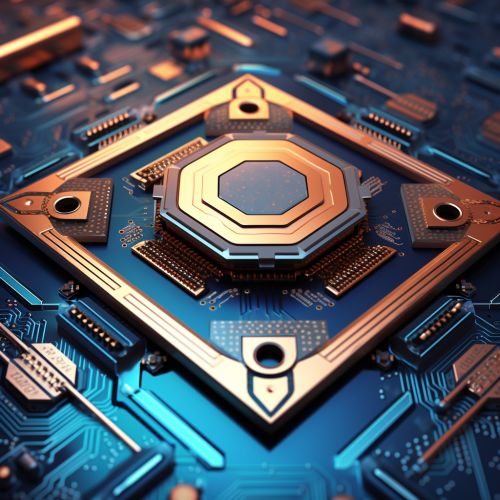Microprocessor
Introduction
A Microprocessor is a computer processor where the data processing logic and control is included on a single integrated circuit, or a small number of integrated circuits. The microprocessor contains the functions of a computer's central processing unit (CPU) on a single or few integrated circuits. The purpose of a microprocessor is to accept digital data as input, process it according to instructions stored in its memory, and provide results as output.
History
The first microprocessors emerged in the early 1970s and were used for electronic calculators, using binary-coded decimal (BCD) arithmetic on 4-bit words. Other embedded uses of 4- and 8-bit microprocessors, such as terminals, printers, various kinds of automation etc., followed rather quickly. Affordable 8-bit microprocessors with 16-bit addressing also led to the first general-purpose microcomputers from the mid-1970s on.


Architecture
Microprocessor architectures can be categorized into RISC (Reduced Instruction Set Computing) and CISC (Complex Instruction Set Computing). While RISC architectures provide higher performance through faster computing, CISC architectures provide a wider range of instructions. Some microprocessors, such as the ARM, offer a mix of these two architectures.
Functionality
The microprocessor functions as the CPU in the stored-program computer. It is a multipurpose, clock driven, register based, digital integrated circuit that accepts binary data as input, processes it according to instructions stored in its memory, and provides results (also in binary form) as output.
Types of Microprocessors
There are different types of microprocessors, including Single-core, Dual-core, Quad-core, Hexa-core, Octa-core, and Deca-core. Each type has a different number of cores, which are individual processing units within the microprocessor. The more cores a microprocessor has, the more tasks it can perform simultaneously.
Applications
Microprocessors are used in a wide range of applications, including computers, mobile phones, appliances, automobiles, and industrial control systems. They are also used in embedded systems, which are computer systems with a dedicated function within a larger mechanical or electrical system.
Future Trends
The future of microprocessors is likely to involve continued increases in processing power and reductions in size. This will enable more powerful and compact devices, and potentially new applications for microprocessors.
